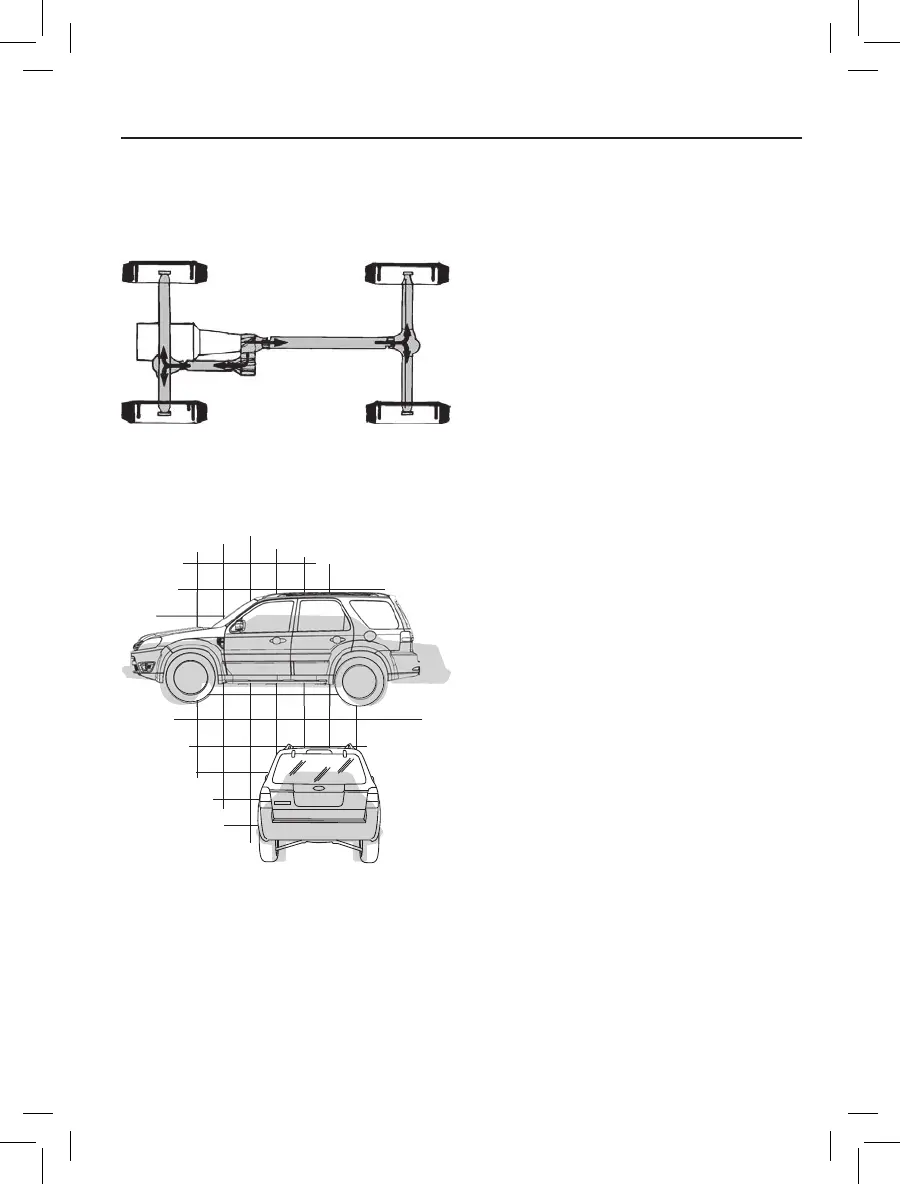-91-
Driving hints
4WD Systems
Your 4WD (when you select the 4x4
mode), uses all four wheels to power
itself through the use of a transfer case.
How your vehicle differs from
other vehicles
4WD vehicles can differ from some other
vehicles in a few noticeable ways.
Your 4WD may be:
Higher - to allow it to travel over rough
terrain without getting hung up or
damaging underbody components, and
to accommodate 4WD components.
Shorter - to give it the capability to
approach inclines and drive over the
crest of a hill without getting hung up
or damaging underbody components.
A shorter wheelbase may make your
vehicle quicker to respond to steering
inputs than a vehicle with a longer
wheelbase.
Narrower - to provide greater
maneuverability in tight spaces,
particularly in off-road use.
These differences make your 4WD
handle differently than an ordinary
passenger car.
Driving off-road with 4WD
When using 4WD, maintain steering
wheel control at all times, especially in
rough terrain. Since sudden changes
in terrain can result in abrupt steering
wheel motion, make sure you grip the
steering wheel from the outside. Do not
grip the spokes.
Drive cautiously to avoid vehicle damage
from concealed objects such as rocks
and stumps. You should either know
the terrain or examine maps of the
area before driving. Map out your route
before driving in the area.
To maintain steering and braking control
of your vehicle, you must have all four
wheels on the ground and they must be
rolling, not sliding or spinning.
Sand
When driving over sand, try to keep all
four wheels on the most solid area of the
trail. Avoid reducing the tyre pressure.
Instead, shift to a lower gear and drive
steadily through the terrain. Apply the
accelerator slowly and avoid spinning the
wheels.

